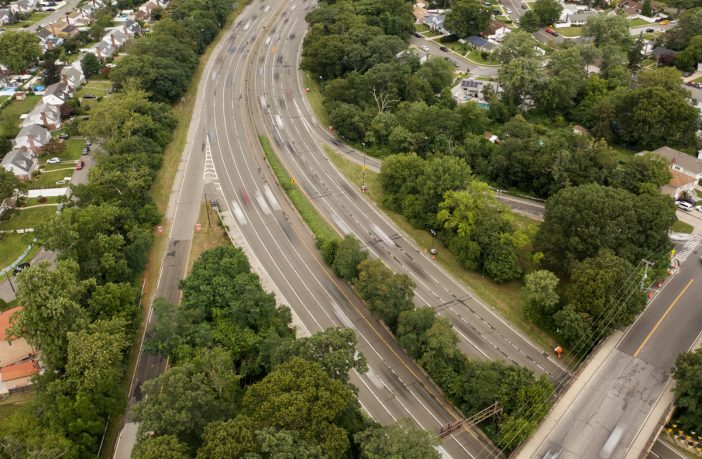The Long Island Contractors’ Association (LICA) and New York State Assembly Member Michaelle Solages (D – Valley Stream) released a report today on the use of Public-Private Partnerships (P3s) in U.S. highway and bridge construction, with a possible application for the Southern State Parkway on Long Island.
The parkway, specifically the 10-mile stretch between Exit 17 in Malverne and Exit 32 in Farmingdale, nicknamed “Blood Alley” due to its hazardous conditions, which include sharp curves, short acceleration and deceleration ramps, the profusion of smaller exits, and the proximity of three major intersecting north-south highways, is in dire need for safety improvements.
The study suggests considering a High Occupancy Toll (HOT) lane throughout the 25-mile corridor and rebuilding the roadway to today’s engineering safety specifications to remedy the needs.
“I am proud to support the release of this study, especially because I believe the data presented will save lives. The traffic crush that occurs on the Southern State Parkway simply cannot be left as is. We must act for families across Long Island. This report provides a future roadmap to successful change,” said Assembly Member Michaelle Solages, District 22.
“As the study shows, New York, as well as many other states, have had successful P3’s that deal with major transportation needs. The Southern State Parkway should be next. Not only would potential improvements to the SSP save lives, but the work to improve conditions would create good jobs and improve traffic across Long Island. This is the sound kind of infrastructure investment we need,” said LICA Executive Marc Herbst.
Despite some improvements, the design of the parkway is largely unchanged since the first section opened in 1927, when it was built to improve beach access for automobiles traveling 35 miles per hour. The evolution of Long Island has increased this number to 200,000 daily commuters which puts their safety at risk as well as results in staggering wear and tear that make the parkways nearly impossible to maintain, compounding safety risks. LICA commissioned the American Road and Transportation Builders Association (ARTBA), a Washington, DC-based advocate for infrastructure and policy to meet the nation’s need for safe and efficient travel, to conduct the study. The report provides a market overview of U.S. highway and bridge public-private partnerships. It concludes with a suggested application that would help address the safety and congestion issues Long Islanders face while traveling the Southern State Parkway.
“ARTBA was proud to once again partner with LICA to produce this economic study. The data we found speaks to the drastic need for a creative solution to solve the Southern State Parkway’s many issues. A P3 relationship, like those that have existed across the country, would provide the opportunity to reduce traffic and safety issues, while increasing efficiency in travel, in a sustainable economic way,” said Alison Black, Senior Vice President & Chief Economist, ARTBA.
According to data obtained from the NYSDOT, 15,768 accidents on the Southern State resulting in property damage, 8,443 resulting in injury, and 78 resulting in death occurred between 2012 and 2019. The parkway handles nearly 200,000 vehicles daily in Nassau County.
The report details case studies of other private investment on similar projects across the country. The use of a P3 could help fund the parkway’s reconstruction with a funding stream supported through a HOT lane. Similar to a High Occupancy (HOV) lane like the one along the Long Island Expressway, an HOT lane includes tolling that may adjust pricing according to congestion levels, with the existing six-lanes remaining toll-free.
Among nine similar P3 projects profiled in the report, the average cost was $1.62 billion (ranging from $554 million to $2.88 billion) and the average length of construction was 4.4 years (ranging from 2.3 to 7 years). According to the most recent official estimate from FHWA, every $1 billion of highway and transit investment supports 13,000 jobs for one year. More than half of the employment impact often occurs outside of the construction industry due to indirect and induced effects.











